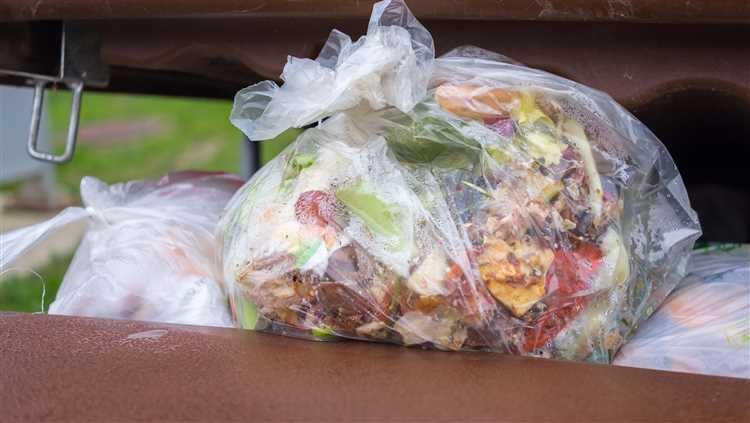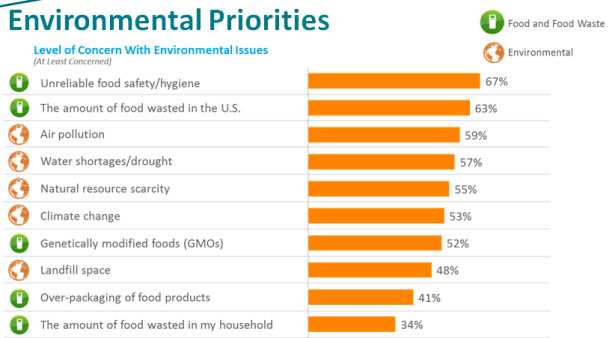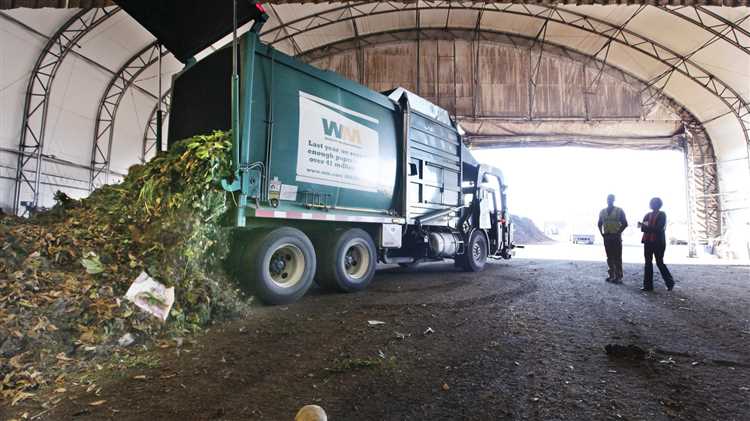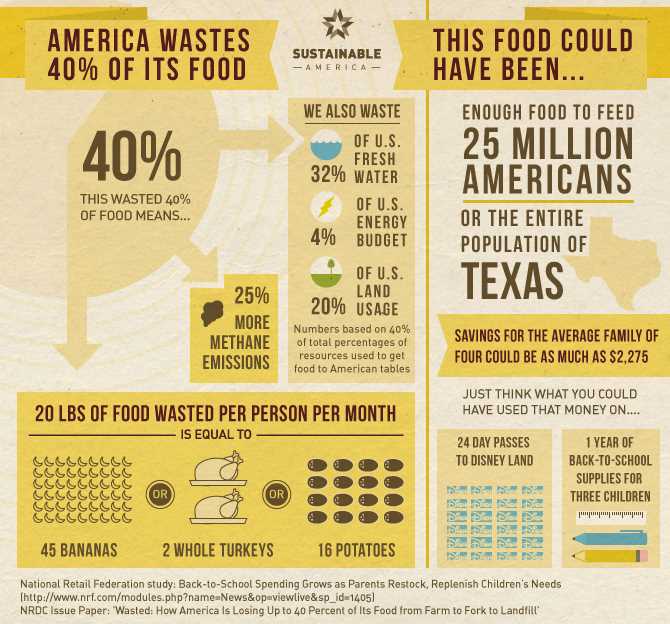
Food waste is a significant issue in the United States, and it has both economic and environmental implications. According to recent studies, Americans waste approximately 40% of their food supply, which amounts to about 133 billion pounds of food per year. This astonishing figure raises questions about the reasons behind such excessive wastage.
One of the primary reasons for food waste in America is the culture of abundance and convenience. The modern lifestyle, characterized by fast-paced schedules and a desire for instant gratification, has contributed to a mentality of excess. Supermarkets are filled with an overwhelming variety of food choices, which often leads to impulse purchases and an overestimation of one’s needs. As a result, unused and forgotten food items often end up in the garbage.
In addition to the culture of abundance, confusion related to expiration dates and “sell-by” dates also contributes to food waste. Many consumers misinterpret these labels and throw away perfectly edible food, fearing that it may be unsafe to consume. This misconception is damaging not only for the consumers’ wallets but also for the environment, as perfectly good food ends up in landfills.
Furthermore, the lack of education and awareness surrounding food waste exacerbates the problem. Many Americans are unaware of the consequences of their wasteful habits. They may not know that food waste not only wastes valuable resources like water, energy, and labor that went into producing the food but also contributes to greenhouse gas emissions when it decomposes in landfills.
In conclusion, reducing food waste in America requires a shift in societal norms, increased education and awareness, and a more mindful approach to consumption. By making conscious choices when purchasing, meal planning, and understanding the true meaning of expiration dates, Americans can play a vital role in reducing food waste and creating a more sustainable future.
- The Impact of Food Waste
- Environmental Consequences of Food Waste
- Social and Economic Implications of Food Waste
- 1. Food Insecurity
- 2. Environmental Sustainability
- The Root Causes of Food Waste
- Lack of Awareness
- Overproduction and Oversupply
- Oversupply and Consumer Demand
- Overbuying
- Excessive Consumption
- Lack of Awareness and Education
- FAQ:
- Why is food waste such a big problem in the United States?
- How much food do Americans waste each year?
- What are the environmental consequences of food waste in the United States?
- What are some possible solutions to reduce food waste in the United States?
The Impact of Food Waste
Food waste has significant negative impacts on both the environment and the economy. Here are some of the main effects of food waste:
- Environmental Impact: When food is wasted, it ends up in landfills where it contributes to greenhouse gas emissions. As the food decomposes, it produces methane, a potent greenhouse gas that contributes to climate change. Additionally, food waste also leads to the depletion of natural resources such as water, land, and energy, which are used in the production, processing, and transportation of food.
- Economic Impact: Food waste is not only a waste of food resources but also a waste of money. When food is wasted, the resources used to produce, transport, and process it are also wasted. This includes the costs of labor, energy, water, and other inputs. Food waste also has an impact on food prices, as the costs of food production are spread over a smaller amount of usable food.
- Social Impact: Food waste also has social implications. While there is an abundance of food wasted, there are still millions of people around the world who suffer from hunger and food insecurity. By reducing food waste, we can redirect these resources to feed those in need and improve food security.
- Food Chain Impact: Food waste occurs at different stages of the food chain, from production and processing to retail and consumer levels. Each stage of the food chain contributes to food waste, and addressing the issue requires efforts from all stakeholders involved. By tackling food waste, we can optimize the food chain, reduce inefficiencies, and promote sustainability.
Environmental Consequences of Food Waste
Food waste is not only a significant waste of resources and money, but it also has severe environmental consequences. When food is wasted, all the resources that went into producing, processing, packaging, and transporting it are also wasted. This includes water, energy, fertilizers, and land.
One of the most significant environmental consequences of food waste is the greenhouse gas emissions it generates. As wasted food decomposes in landfills, it releases methane, a potent greenhouse gas that contributes to climate change. Methane is about 25 times more potent than carbon dioxide in terms of its warming potential over a 100-year period.
In addition to greenhouse gas emissions, food waste also contributes to water waste. Agriculture uses a significant amount of water, and when food is wasted, all the water used to produce it is also wasted. This has implications for water scarcity, especially in regions where water resources are already limited.
Food waste also has negative impacts on biodiversity. The conversion of land for agriculture contributes to habitat destruction, fragmentation, and loss of natural ecosystems. When food is wasted, it means that these negative impacts on biodiversity occurred for no purpose.
Another environmental consequence of food waste is the loss of nutrients. Food waste not only means that nutrients go to waste, but it also means that additional resources will be required to produce, process, and transport more food to compensate for the wasted food. This perpetuates the cycle of resource depletion and environmental damage.
To address these environmental consequences, it is important to reduce food waste at all stages of the food supply chain. This includes better storage and transportation practices, improved consumer education, and revised food labeling systems. By taking action to reduce food waste, we can minimize its environmental impact and work towards a more sustainable food system.
| Food Waste | Environmental Consequences |
| Greenhouse gas emissions | Methane release from decomposing food in landfills |
| Water waste | Wasted water used in food production |
| Biodiversity loss | Habitat destruction from agricultural land conversion |
| Nutrient loss | Wasted nutrients and additional resources required |
Social and Economic Implications of Food Waste

Food waste in America has far-reaching social and economic implications. With millions of individuals and families experiencing food insecurity, the wastage of edible food is not only environmentally irresponsible but also morally troubling. Furthermore, the economic impact of food waste is significant, affecting both businesses and consumers.
1. Food Insecurity
Food waste exacerbates the problem of food insecurity. In America, millions of individuals struggle to access nutritious and affordable food, while nearly 40% of food produced ends up in landfills. This wastage means that food that could have been donated or distributed to those in need never reaches them. By addressing the issue of food waste, we can work towards reducing food insecurity and ensuring that everyone has access to healthy and sustainable food sources.
2. Environmental Sustainability

Food waste contributes to environmental degradation, which, in turn, has social and economic impacts. The production, transportation, and disposal of wasted food require significant resources, including water, energy, and land. The excessive use of these resources for food that ultimately goes unused contributes to carbon emissions, deforestation, and water scarcity. By reducing food waste, we can mitigate these environmental factors and move towards a more sustainable future.
Additionally, reducing food waste can also have economic benefits. The cost of wasted food adds up not only for individual households but also for businesses and the economy as a whole. Food that is thrown away represents a loss of money for those who purchased it, as well as a loss for businesses in terms of wasted resources, labor, and potential revenue. By minimizing food waste, we can save money, reduce inefficiencies, and allocate resources more effectively.
The Root Causes of Food Waste
Food waste is a significant problem not only in America but around the world. The root causes of food waste are multifaceted, and addressing them requires a comprehensive approach. Understanding these causes can help develop effective strategies to reduce food waste and create a more sustainable food system.
Lack of Awareness
One of the primary causes of food waste is a lack of awareness among consumers. Many people are unaware of the environmental, social, and economic impacts of wasting food. They often underestimate the value of food or do not realize the resources and energy that go into producing it. Increasing awareness through education campaigns and information dissemination can help shift attitudes and behaviors towards more responsible consumption.
Overproduction and Oversupply
The food industry plays a significant role in contributing to food waste. Overproduction and oversupply of food are common practices to meet market demand and ensure availability. However, this often leads to surplus food that goes unsold and eventually wasted. The industry should focus on better forecasting and planning to reduce overproduction and better distribution to prevent oversupply.
Additionally, strict cosmetic standards and aesthetic preferences also contribute to food waste. Fruits and vegetables that do not meet cosmetic standards may be discarded even though they are perfectly edible. Adjusting these standards and promoting the consumption of imperfect produce can help minimize waste in the supply chain.
Inefficient Supply Chain
Inefficiencies within the food supply chain are responsible for significant food waste. Transportation delays, inadequate storage facilities, and poor handling practices can cause food to spoil or become damaged before reaching the consumer. Improving infrastructure and logistics, implementing better inventory management systems, and investing in cold chain facilities can help reduce these inefficiencies and prevent food waste.
Lack of Donations and Food Recovery
A considerable amount of edible food ends up in landfills instead of being donated to those in need. This can be attributed to the lack of donation infrastructure and food recovery programs. Establishing partnerships between food producers, retailers, and food banks can help facilitate the donation and redistribution of surplus food. Implementing tax incentives for food donations can also encourage businesses to participate in these programs.
In conclusion, food waste is a complex issue with various root causes. Raising awareness, improving production and distribution practices, enhancing supply chain efficiency, and promoting food donation are all vital steps towards reducing food waste. By addressing these root causes, we can work towards a more sustainable and responsible approach to food consumption and ensure that valuable resources are not wasted.
Oversupply and Consumer Demand

One of the main reasons why Americans waste so much food is due to the problem of oversupply and consumer demand. In the United States, there is a vast abundance of food available to consumers. Grocery stores are filled with a wide variety of fresh produce, meat, dairy products, and packaged goods. Unfortunately, this surplus of food often leads to overbuying and excessive consumption.
Overbuying
Many Americans have a tendency to buy more food than they actually need. This can be attributed to a variety of factors, such as bulk purchasing habits, fear of running out of certain items, and the desire to take advantage of sales and discounts. As a result, people end up with more food than they can consume before it goes bad, leading to waste.
Excessive Consumption
Americans are also known for their culture of excess and overconsumption. Portion sizes at restaurants and fast food chains are often much larger than necessary, leading to leftovers that are often thrown away. Additionally, the constant availability of food and the widespread habit of snacking throughout the day contribute to excessive consumption, making it difficult to fully consume all the food that is purchased.
In addition, consumer demand plays a role in the amount of food that goes to waste. People often prefer to purchase products that are aesthetically pleasing and visually perfect, leading to a large amount of food being discarded for cosmetic reasons. Misshapen fruits and vegetables, slightly bruised or discolored items, and products approaching their expiration date are often overlooked and left unsold, contributing to the overall waste problem.
Addressing the issue of oversupply and consumer demand is crucial in reducing food waste in America. This can be done through education and awareness campaigns that encourage responsible shopping habits, portion control, and the acceptance of imperfect produce. Additionally, efforts to redistribute surplus food to those in need can help alleviate the wastage problem and contribute to a more sustainable food system.
Lack of Awareness and Education
One of the primary reasons why Americans waste so much food is due to a lack of awareness and education about the issue. Many people simply do not realize the extent of the problem or the impact that their individual actions have on food waste. Without this understanding, it is difficult for individuals to make informed decisions and take action to reduce their own food waste.
Additionally, there is a lack of education surrounding proper food storage and preservation techniques. For example, many people may not know how to properly store fruits and vegetables to ensure their longevity or how to properly portion meals to avoid overeating and wasting excess food. This lack of knowledge leads to a significant amount of food being thrown away unnecessarily.
Furthermore, the lack of awareness and education extends to the understanding of expiration dates. Many individuals mistakenly believe that expiration dates are strict deadlines, leading them to discard perfectly good food. This misunderstanding contributes to a significant amount of food waste.
Addressing this issue requires increased efforts in educating the public about the importance of reducing food waste and providing them with the knowledge and tools to do so. This can be done through educational campaigns, school programs, and community initiatives that teach individuals about proper food storage, portioning, and the true meaning of expiration dates. By increasing awareness and educating the public, we can work towards reducing food waste and creating a more sustainable food system.
FAQ:
Why is food waste such a big problem in the United States?
The United States is known for its large portion sizes and abundance of food options. This often leads to overbuying, with consumers purchasing more food than they can consume. Additionally, there is a cultural preference for fresh and aesthetically pleasing food, which results in perfectly good but slightly imperfect produce being discarded. Lack of efficient storage and transportation infrastructure also contribute to food waste.
How much food do Americans waste each year?
According to the Environmental Protection Agency (EPA), about 30-40% of the food supply in the United States goes to waste, which amounts to roughly 133 billion pounds of food each year.
What are the environmental consequences of food waste in the United States?
Food waste has significant environmental consequences. When food is wasted, all the resources that went into producing, processing, and transporting it are also wasted. This includes water, land, labor, energy, and chemicals. Moreover, when organic waste ends up in landfills, it decomposes and produces methane, a potent greenhouse gas that contributes to climate change.
What are some possible solutions to reduce food waste in the United States?
There are several approaches to reduce food waste in the United States. One solution is to improve food labeling and educate consumers about the meaning of expiration dates, as many people mistakenly discard food that is still safe to eat. Another approach is to promote better storage and meal planning habits at the individual level. Additionally, businesses can implement more efficient supply chain management and donate excess food to charities and food banks.